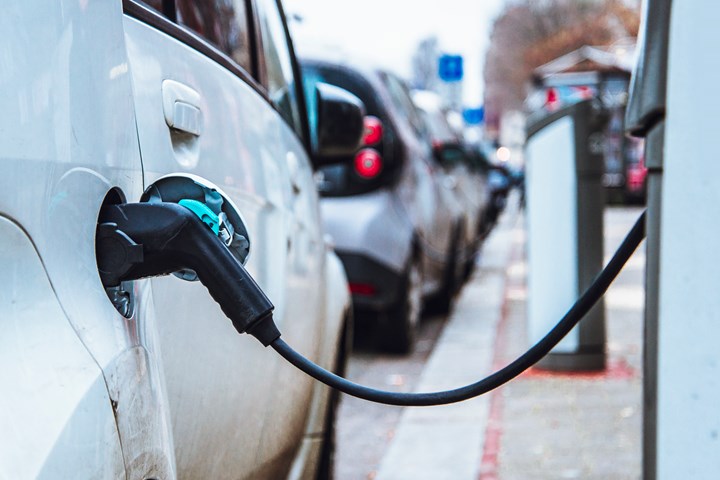Future-facing commodities: your questions answered
Our experts tackle everything from lithium demand to the rare earth elements at risk of substitution, and from copper and aluminium competition to green hydrogen costs
3 minute read
Robin Griffin
Vice President, Metals and Mining Research

Robin Griffin
Vice President, Metals and Mining Research
An integral part of the research team since 2007, Robin leads our analysis across metals and mining markets.
Latest articles by Robin
-
Opinion
Metals and mining tariff scenarios: potential impacts of new US tariffs on metals markets
-
Opinion
Where next for metals markets in 2025?
-
Opinion
eBook | Understanding the metals and mining landscape in 2025
-
Featured
Metals & mining 2025 outlook
-
Opinion
Challenges and opportunities for the steel value chain
-
Opinion
The future of coal in the global energy sector
Wood Mackenzie’s second annual Future Facing Commodities Forum took a deep dive into the outlook for the materials key to building our electrified future. We explored the status and outlook of electric vehicle (EV) penetration, renewables power generation and storage, the outlook and costs of disruptive technologies and the impact on key commodity markets.
During the event, we invited attendees to send us their most pressing questions. Perhaps unsurprisingly, risks to demand forecasts featured heavily, highlighting the uncertainty associated with the energy transition.
The most common topics centred around five broad themes:
- Battery technology change
- Substitution
- Scrap evolution
- Decarbonisation policy impacts
- The viability of hydrogen technologies
We’ve summarised the responses from our global commodity experts in a new report – fill in the form for your complimentary copy. And read on for an extract.
Where is the greatest potential impact for lithium demand?
The development and adoption of existing Li-ion cathode chemistries will have a large impact on lithium demand in the coming decades, since different chemistries require a varying amount of lithium in their compositions.
For instance, lithium iron phosphate (LFP) uses less than half the lithium of nickel manganese cobalt (NMC) batteries. And a cathode chemistry switch is certainly an option for OEMs to relieve demand pressure on lithium.
However, there are limitations to the adoption of using certain technologies. For example, LFP cathodes are typically used in lower-performance EVs.
In the longer term, sodium-ion (Na-ion) batteries and fuel cells offer possible alternatives to lithium. We would need to see significant improvement in Na-ion technologies (cell-to-pack and cell-to-chassis engineering) for its viability in the >40 kWh EV market. Meanwhile, Na-ion energy densities are considerably lower than other Li-based batteries.
Which rare earth elements (REEs) are at risk of substitution?
When considering rare earth permanent magnet applications, the outlook for light and heavy rare earth elements (LREE and HREE) demand shows diverging trends.
The LREEs neodymium and praseodymium are the primary forms in which rare earths are consumed in magnets. And although there are some substitution options from other rare earths, such as gadolinium, we expect market availability of neodymium in particular to remain in a constant state of relative tightness.
For HREEs, efforts to reduce exposure to high prices, market volatility and ESG concerns have intensified.

Robin Griffin
Vice President, Metals and Mining Research
An integral part of the research team since 2007, Robin leads our analysis across metals and mining markets.
Latest articles by Robin
-
Opinion
Metals and mining tariff scenarios: potential impacts of new US tariffs on metals markets
-
Opinion
Where next for metals markets in 2025?
-
Opinion
eBook | Understanding the metals and mining landscape in 2025
-
Featured
Metals & mining 2025 outlook
-
Opinion
Challenges and opportunities for the steel value chain
-
Opinion
The future of coal in the global energy sector
On the other hand, for HREEs, efforts to reduce exposure to high prices, market volatility and ESG concerns have intensified. This is resulting in some OEMs preferring ‘low rare earth’ or ‘no rare earth’ technologies.
One example is the use of the HREE dysprosium (Dy), vital for use in magnets for high-temperature environments, such as EVs. Grain boundary diffusion has developed as a key technology that allows selective doping with Dy rather than its use as a major alloy component, while maintaining the desired performance. This lowers the overall intensity of Dy use.
How reliant will graphite and lithium supply be on recycling?
Battery recycling typically focuses on the higher-value materials and graphite recycling is, therefore, limited. Graphite will only be recycled if economically viable to do so and, at the moment, there is little interest in recovering it. Importantly, primary graphite deposits are also widely available around the world, which will affect the need for recycling graphite in the longer term.
At the other end of the scale, recycled lithium will need to have a prominent place in the supply landscape long-term. This is due to the rapid demand growth and complexity of production and processing. Currently, the supply from recycled lithium is small, partly due to the lack of end-of-life batteries, but also an immature supply chain.
As the supply chain matures and end-of-life battery availability increases, we expect to see increased supply from the recycled resource stream. If we assume battery life averages around eight years, it will take until the early 2030s before significant quantities of end-of-life cathode material become available.
The quantity will obviously also be affected by improvements in battery life over time, and the potential for used EV batteries to be diverted into the energy storage system (ESS) sector.
Can graphene anodes replace graphite? Is copper-clad aluminium a risk to copper demand? What input costs are required to enable US$2/kg hydrogen and how does transportation affect cost? How will the US Inflation Reduction Act (IRA) affect EU steel?







